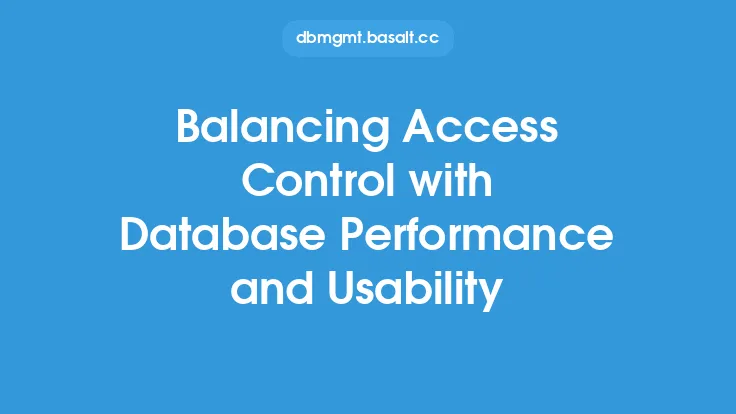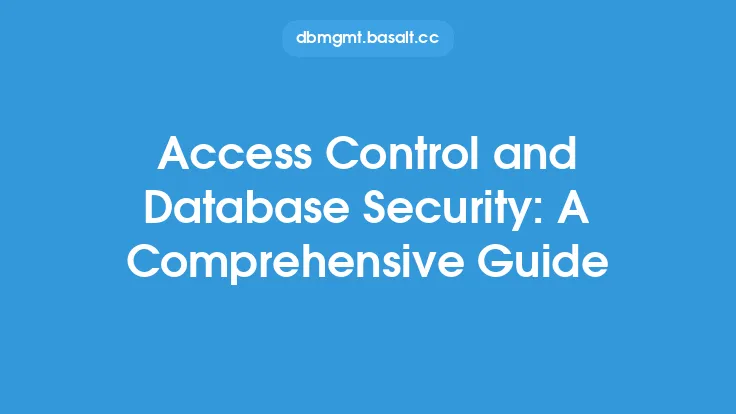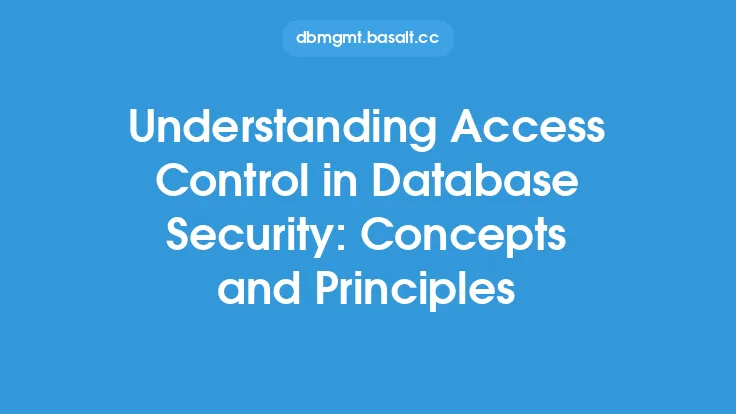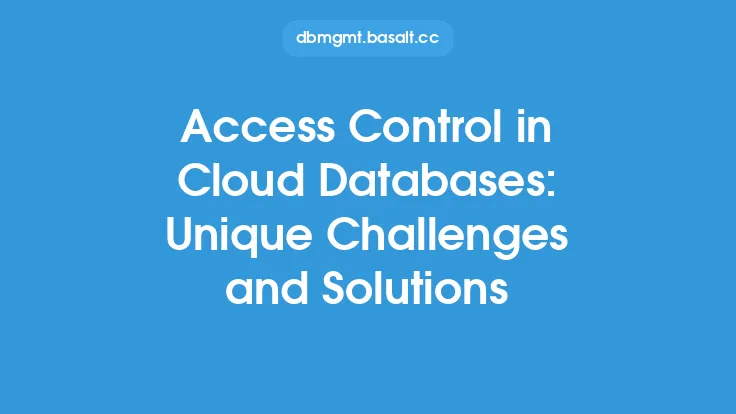Database governance is a critical aspect of database administration that involves striking a balance between access and control. On one hand, databases need to be accessible to authorized personnel to ensure the smooth operation of an organization's daily activities. On the other hand, databases contain sensitive information that needs to be protected from unauthorized access, misuse, and data breaches. In this article, we will delve into the concept of database governance, its importance, and the strategies that can be employed to balance access and control.
Introduction to Database Governance
Database governance refers to the set of policies, procedures, and standards that are put in place to manage and regulate access to an organization's databases. It involves defining roles and responsibilities, establishing access controls, and monitoring database activity to ensure that data is handled in a secure and compliant manner. Effective database governance is essential for protecting sensitive information, preventing data breaches, and ensuring the integrity of an organization's data assets.
Key Components of Database Governance
There are several key components that make up a comprehensive database governance framework. These include:
- Data classification: This involves categorizing data based on its sensitivity and importance to the organization. Data classification helps to determine the level of access control that should be applied to different types of data.
- Access control: This involves defining who has access to the database and what actions they can perform. Access control can be implemented using a variety of techniques, including authentication, authorization, and encryption.
- Auditing and monitoring: This involves tracking and recording all database activity, including logins, queries, and changes to data. Auditing and monitoring help to detect and respond to security incidents, as well as ensure compliance with regulatory requirements.
- Data backup and recovery: This involves ensuring that data is properly backed up and can be recovered in the event of a disaster or data loss. Data backup and recovery are critical for ensuring business continuity and minimizing downtime.
Balancing Access and Control
Balancing access and control is a critical aspect of database governance. On one hand, databases need to be accessible to authorized personnel to ensure the smooth operation of an organization's daily activities. On the other hand, databases contain sensitive information that needs to be protected from unauthorized access, misuse, and data breaches. To balance access and control, organizations can employ a variety of strategies, including:
- Role-based access control: This involves assigning access rights based on a user's role within the organization. Role-based access control helps to ensure that users only have access to the data and resources they need to perform their jobs.
- Least privilege access: This involves granting users the minimum level of access necessary to perform their jobs. Least privilege access helps to reduce the risk of data breaches and unauthorized access.
- Segregation of duties: This involves separating duties and responsibilities to prevent a single user from having too much control over the database. Segregation of duties helps to prevent fraud and errors, as well as ensure that data is handled in a secure and compliant manner.
Technical Implementation of Database Governance
From a technical perspective, database governance can be implemented using a variety of tools and technologies. These include:
- Database management systems: These are software systems that are used to manage and regulate access to databases. Database management systems provide a range of features and functions, including access control, auditing and monitoring, and data backup and recovery.
- Identity and access management systems: These are software systems that are used to manage user identities and access rights. Identity and access management systems provide a range of features and functions, including authentication, authorization, and role-based access control.
- Encryption technologies: These are used to protect data in transit and at rest. Encryption technologies help to prevent unauthorized access to sensitive information, as well as ensure compliance with regulatory requirements.
Best Practices for Database Governance
There are several best practices that organizations can follow to ensure effective database governance. These include:
- Establishing clear policies and procedures: This involves defining roles and responsibilities, as well as establishing standards for access control, auditing and monitoring, and data backup and recovery.
- Providing training and awareness: This involves educating users about the importance of database governance, as well as providing training on database management and security.
- Continuously monitoring and reviewing: This involves regularly reviewing and updating database governance policies and procedures to ensure they remain effective and relevant.
- Ensuring compliance with regulatory requirements: This involves ensuring that database governance policies and procedures comply with relevant laws and regulations, such as GDPR and HIPAA.
Conclusion
In conclusion, database governance is a critical aspect of database administration that involves striking a balance between access and control. By implementing effective database governance policies and procedures, organizations can protect sensitive information, prevent data breaches, and ensure the integrity of their data assets. By following best practices and using a range of tools and technologies, organizations can ensure that their databases are secure, compliant, and well-governed.





